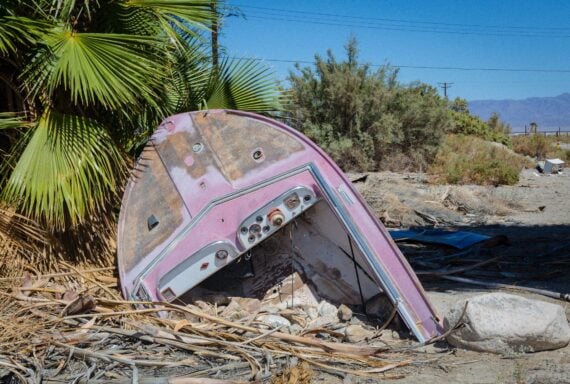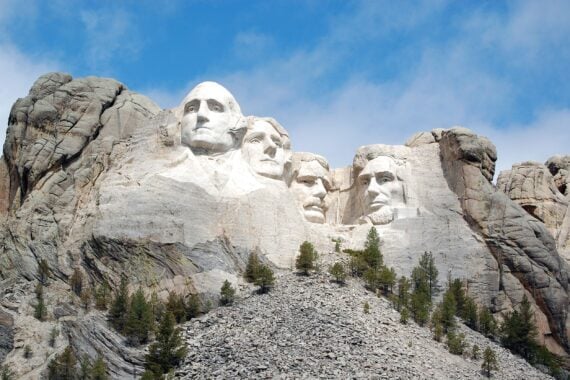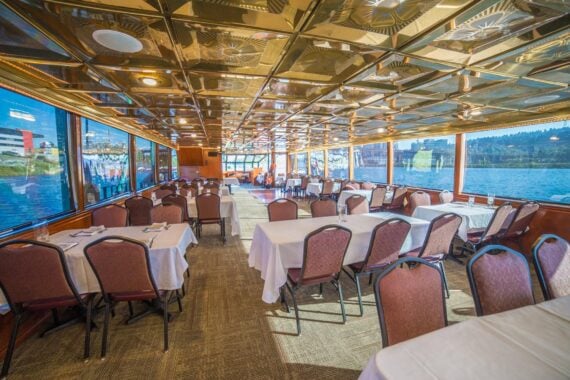What would a popular tourist destination look like without the crowds? From ghost towns and desolate amusement parks to deserted resorts and radioactive cities, these destinations around the world were once thriving tourist hotspots but have been abandoned for years.
The stories behind them are fascinating and sometimes unsettling, and they include the sad tale of a recently demolished Florida resort that was the site of one of the Beatles’ biggest performances.
Salton Sea, California: Before
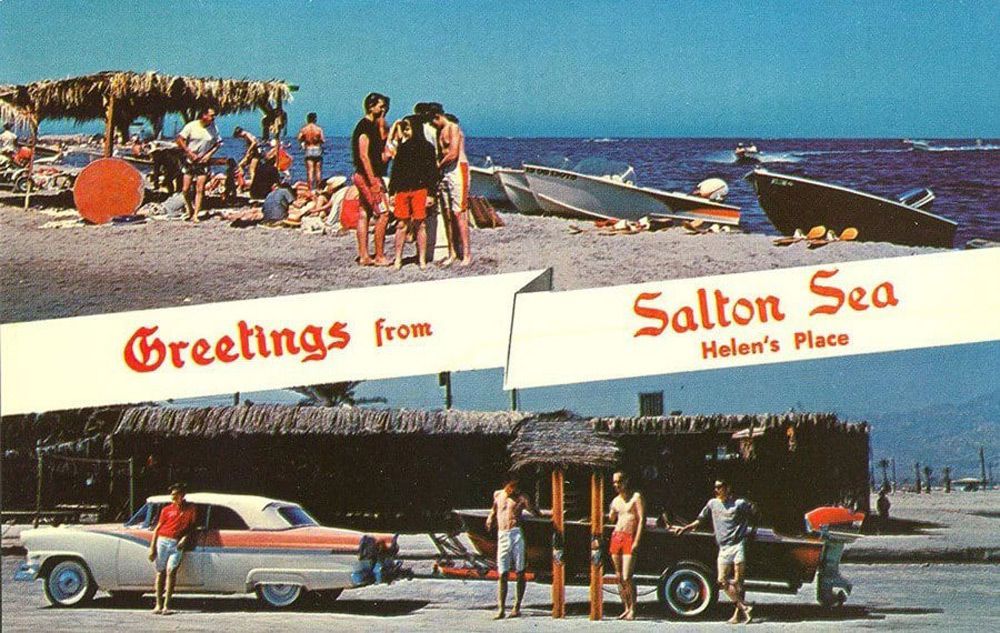
In the mid-20th century, Colorado River overflow flooded the Salton Sink, creating the Salton Sea in the middle of the California desert, near Los Angeles. The “Salton Riviera” became a thriving resort destination deemed the next Palm Springs. Hollywood celebrities and politicians flocked to the chic desert oasis, making it one of the most popular recreation retreats in the state in the 1950s and ’60s.
Salton Sea, California: After
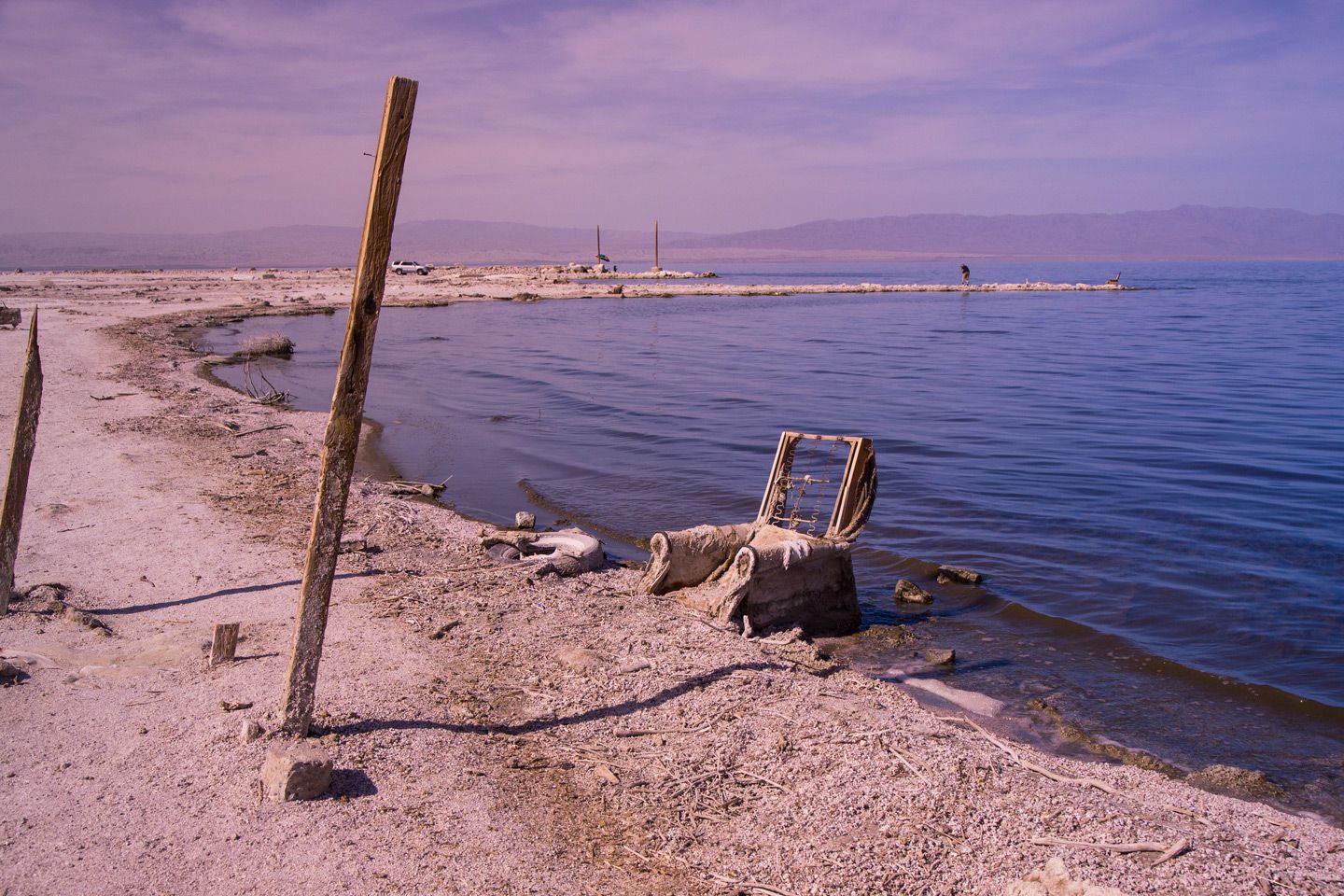
Ultimately, the saline body of water became an ecological disaster. A rising sea level (and extremely salty and polluted water) led to the area’s abandonment by 1980. Today, many abandoned structures are still there to explore — if the smell of rotten eggs doesn’t get to you first. Funky aromas notwithstanding, the Salton Sea is now seen as a potential source of the scarce element lithium, a key component in rechargeable batteries.
Grossinger’s Catskill Resort Hotel, New York: Before
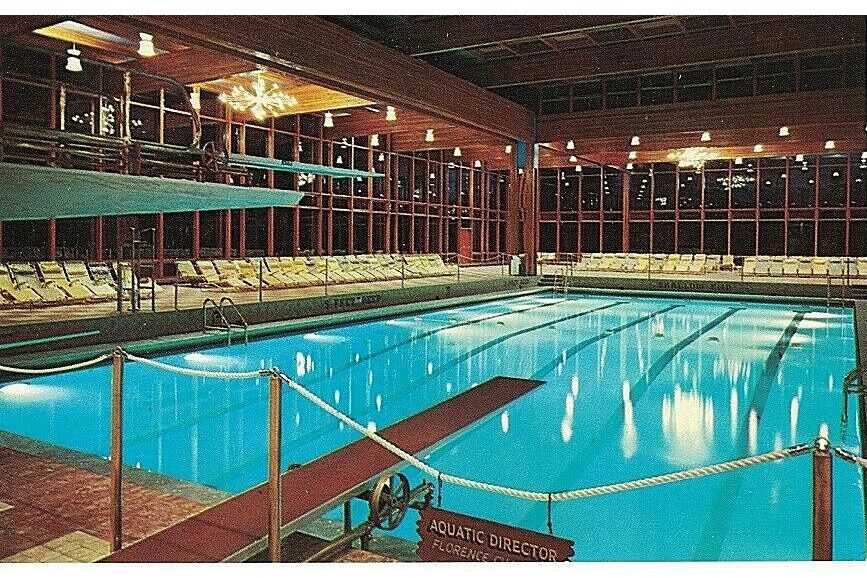
Believed to be the inspiration for the movie “Dirty Dancing,” Grossinger’s Catskill Resort Hotel in Liberty, New York, was the crown jewel of the “Borscht Belt” (a nickname for the now mostly defunct summer resorts in the Catskill Mountains).
In its heyday during the 1950s and ’60s, it was a haven for wealthy summer vacationers, attracting the best comedians — including Mel Brooks, Danny Kaye, and Jackie Mason — to its stages and hosting black-tie events in the ballroom. The resort had a swimming pool, theater, golf course, ski slope, and even a landing strip.
Grossinger’s Catskill Resort Hotel, New York: After
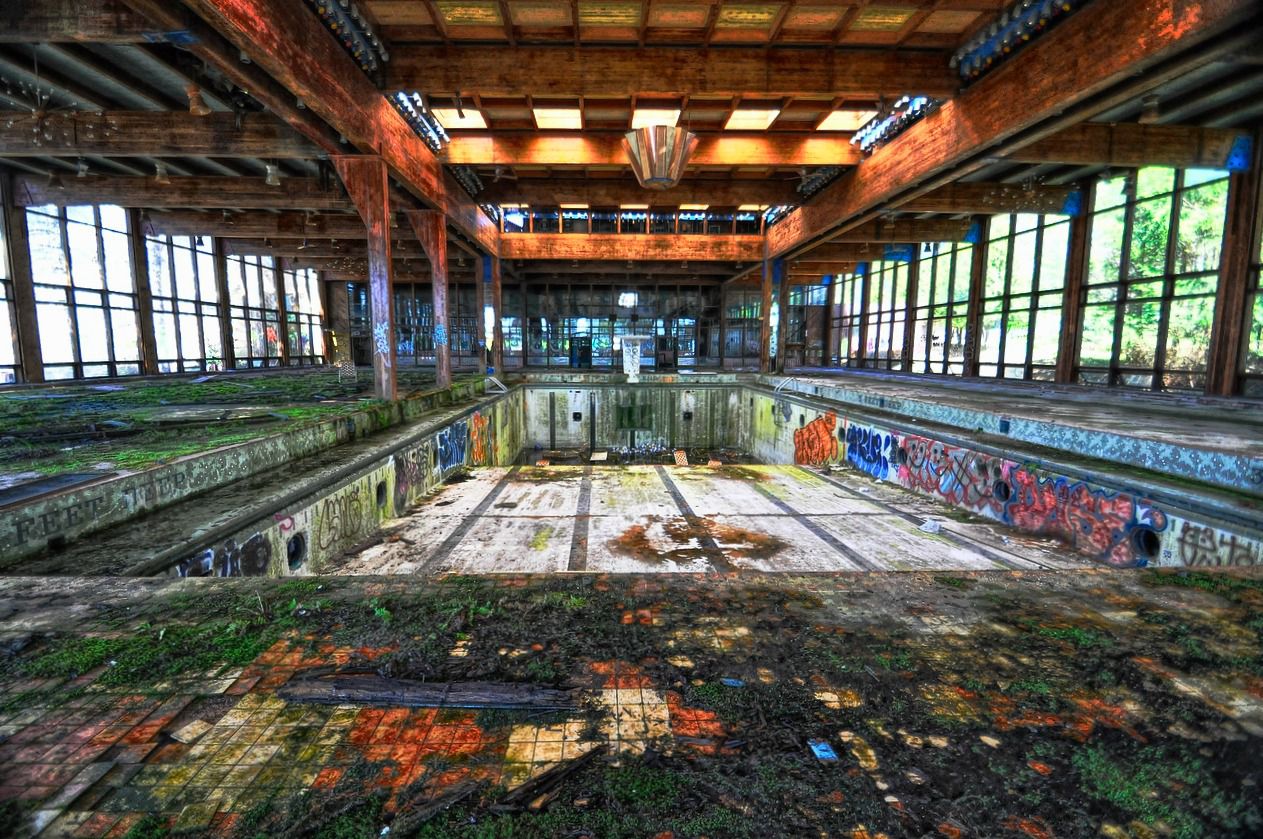
Business declined in the 1970s when tropical locales such as Hawaii and the Bahamas lured young people to their shores. After turnover in management and financial difficulties, the property fell into disrepair and shuttered permanently in 1986, falling victim to graffiti-laden walls, mildewed carpets, broken glass, and plant growth in the Olympic-size pool. Demolition of the resort’s buildings began in 2018 with the last being razed in 2022.
Six Flags New Orleans: Before
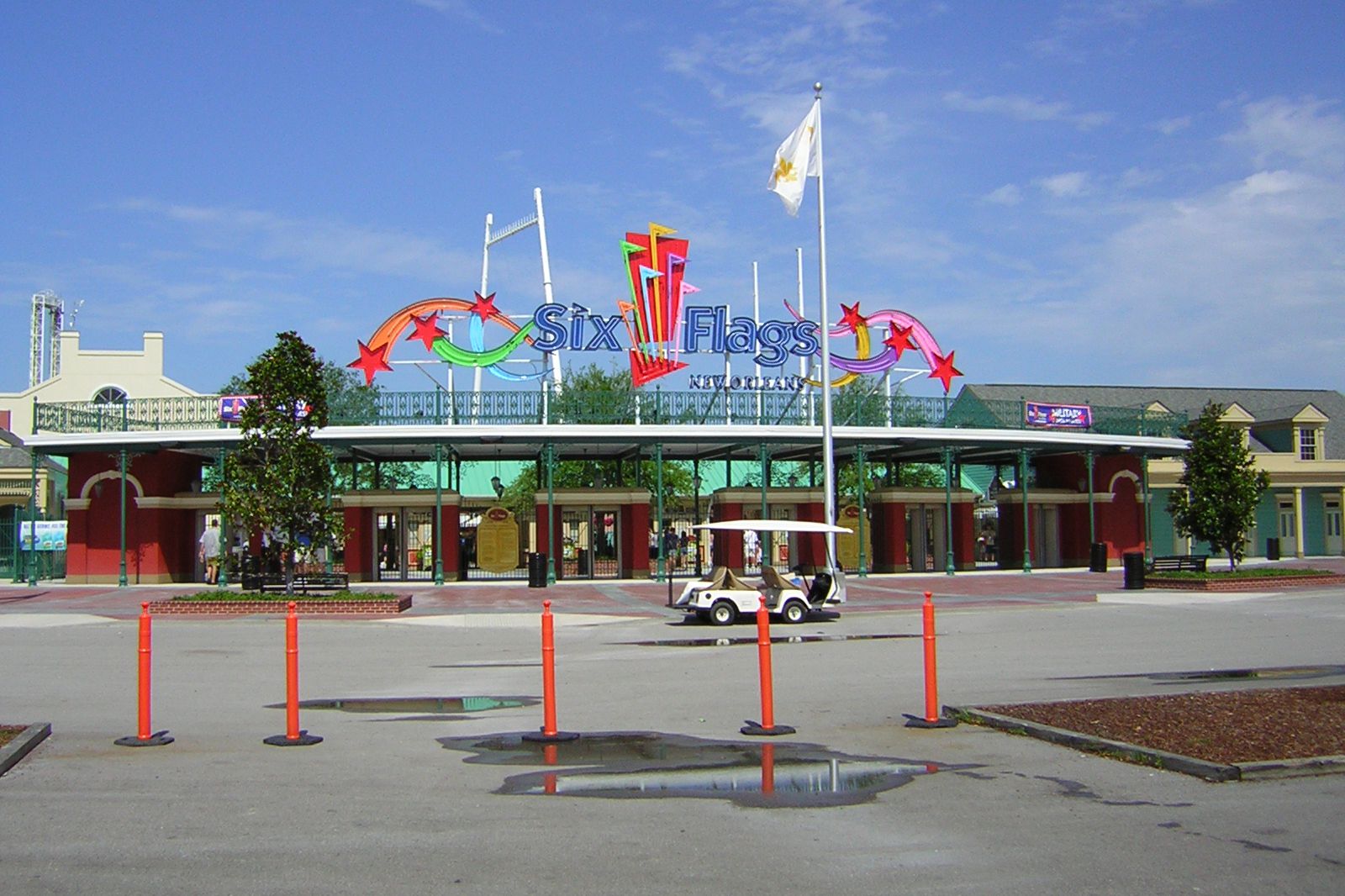
There are plenty of reasons to visit New Orleans: beignets, jazz, Jackson Square, the Garden District, and Bourbon Street, to name a few. The city’s vast theme park, Six Flags New Orleans (formerly Jazzland), was once another popular Louisiana attraction. The complex opened in 2000 and ran successfully for five years.
Trending on Cheapism
Six Flags New Orleans: After
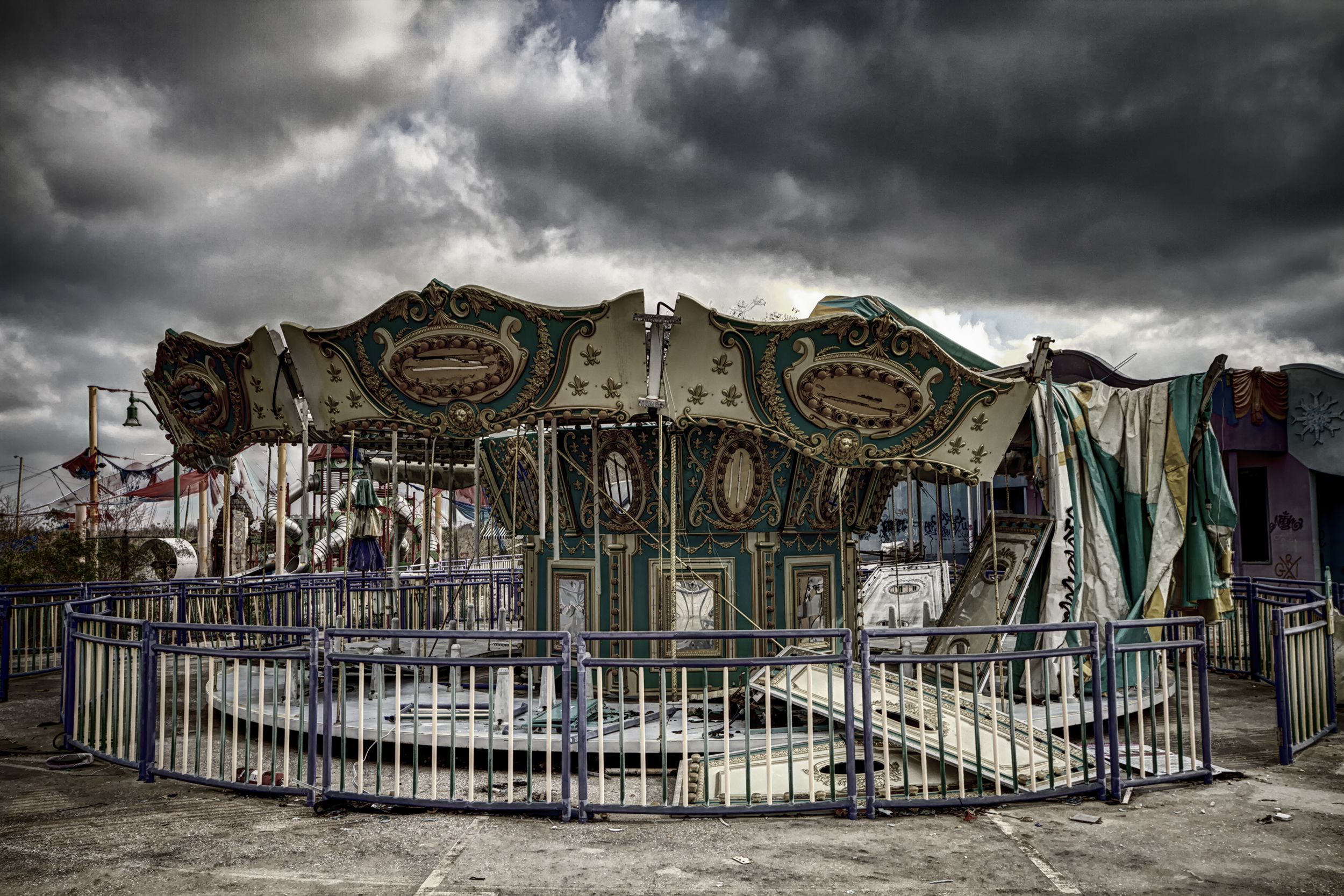
Hurricane Katrina cut the business’s success short in August 2005. The storm left much of the 140-acre park flooded, and it was never reopened. You can still feel its devastating effects. Plans to redevelop the site, now city-owned, have all fallen through so far, leaving the remains of Southern and Cajun-themed rides such as the Muskrat Scrambler behind for now, although redevelopment efforts continue to be explored.
Rhyolite, Nevada: Before
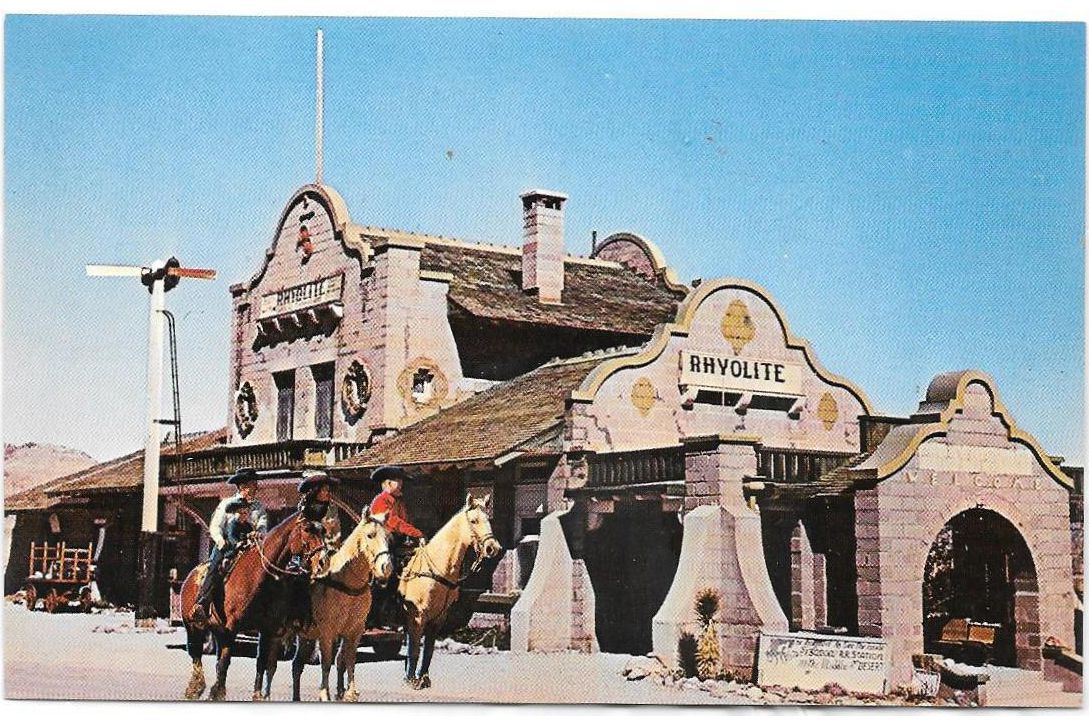
One of Nevada’s largest ghost towns, Rhyolite was once the third-largest city in the state. Formed during the Gold Rush in 1904, it grew to be a bustling town of more than 10,000 people with an infamous red light district, 50 saloons, hotels, an opera house and symphony, a school for 250 children, a hospital, and even its own stock exchange with a three-story bank. The Death Valley-area town was also known for its lively nightlife, and socializing at sporting events and dances was common.
Rhyolite, Nevada: After
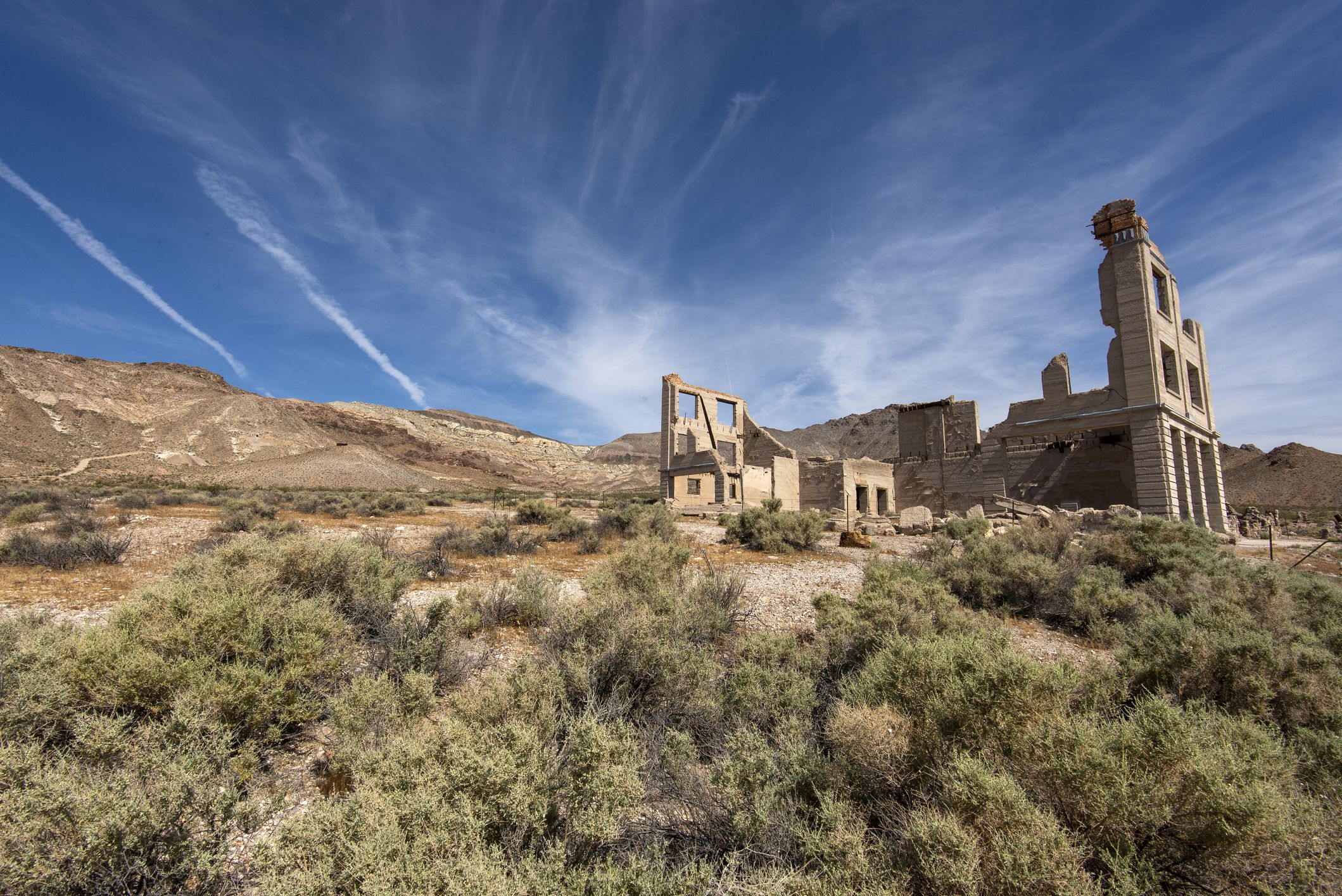
Like many Gold Rush towns, it lived fast and died young. By 1916, the town was deserted. It’s been abandoned for more than a century, but you’ll still find the remains of the bank, jail, and train depot, along with a restored Bottle House (made from 50,000 glass beer bottle bottoms, of which the desert town had a steady supply). Over the years, it’s also been restored many times for Western films.
Sign up for our newsletter
Glenrio, Texas/New Mexico: Before
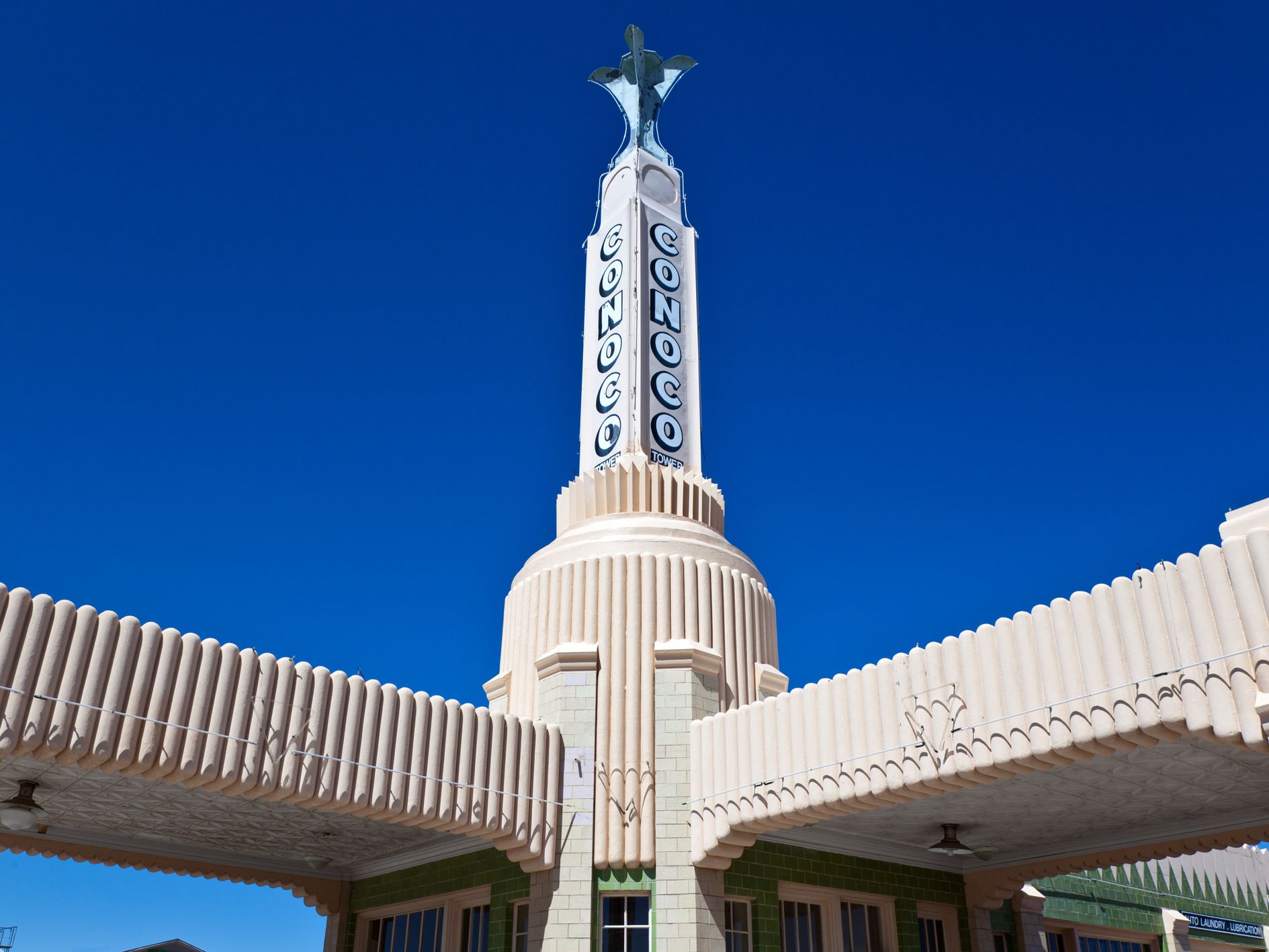
Founded in 1903, the town of Glenrio — which straddles the Texas-New Mexico border and is officially part of both states — once boomed with the road-tripping tourism industry along Route 66. Motorists could stop for gas on the Texas side, where taxes were lower, and get drinks on the New Mexico side, since alcohol sales were illegal in the local Texas county.
Glenrio, Texas/New Mexico: After
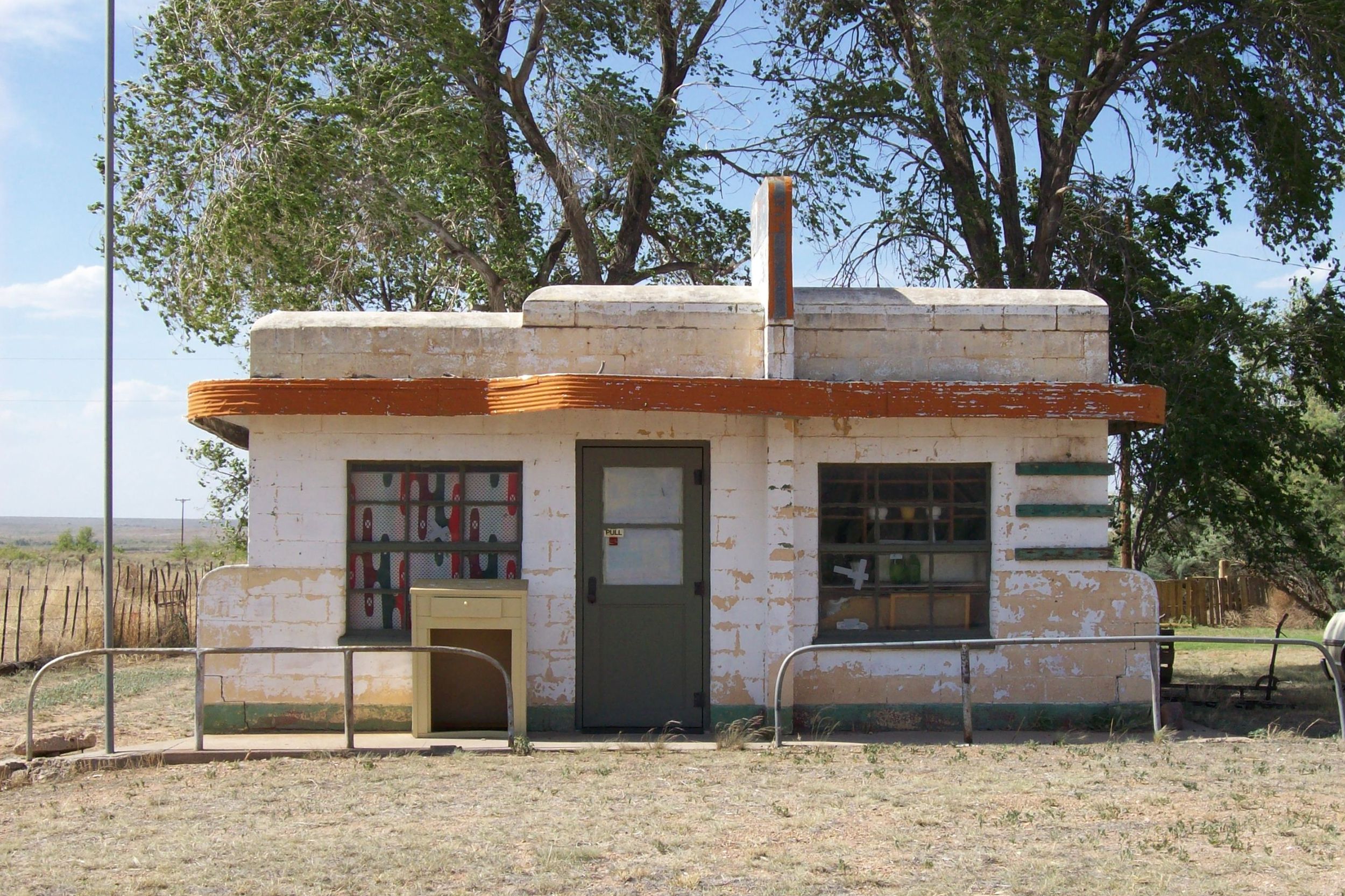
A faster, well-maintained Interstate 40 was built in 1975, bypassing the town, and Glenrio became just another roadside casualty along iconic Route 66. The abandoned town is mostly intact, and on the U.S. National Register of Historic Places.
Heritage USA, South Carolina: Before

A massive Christian-themed park in Fort Mill, South Carolina, built by famed televangelists Jim and Tammy Bakker in 1978, was once one of the state’s most popular attractions. By 1986, Heritage USA — often described as a Christian version of Disneyland — was drawing nearly 6 million visitors a year.
Heritage USA, South Carolina: After
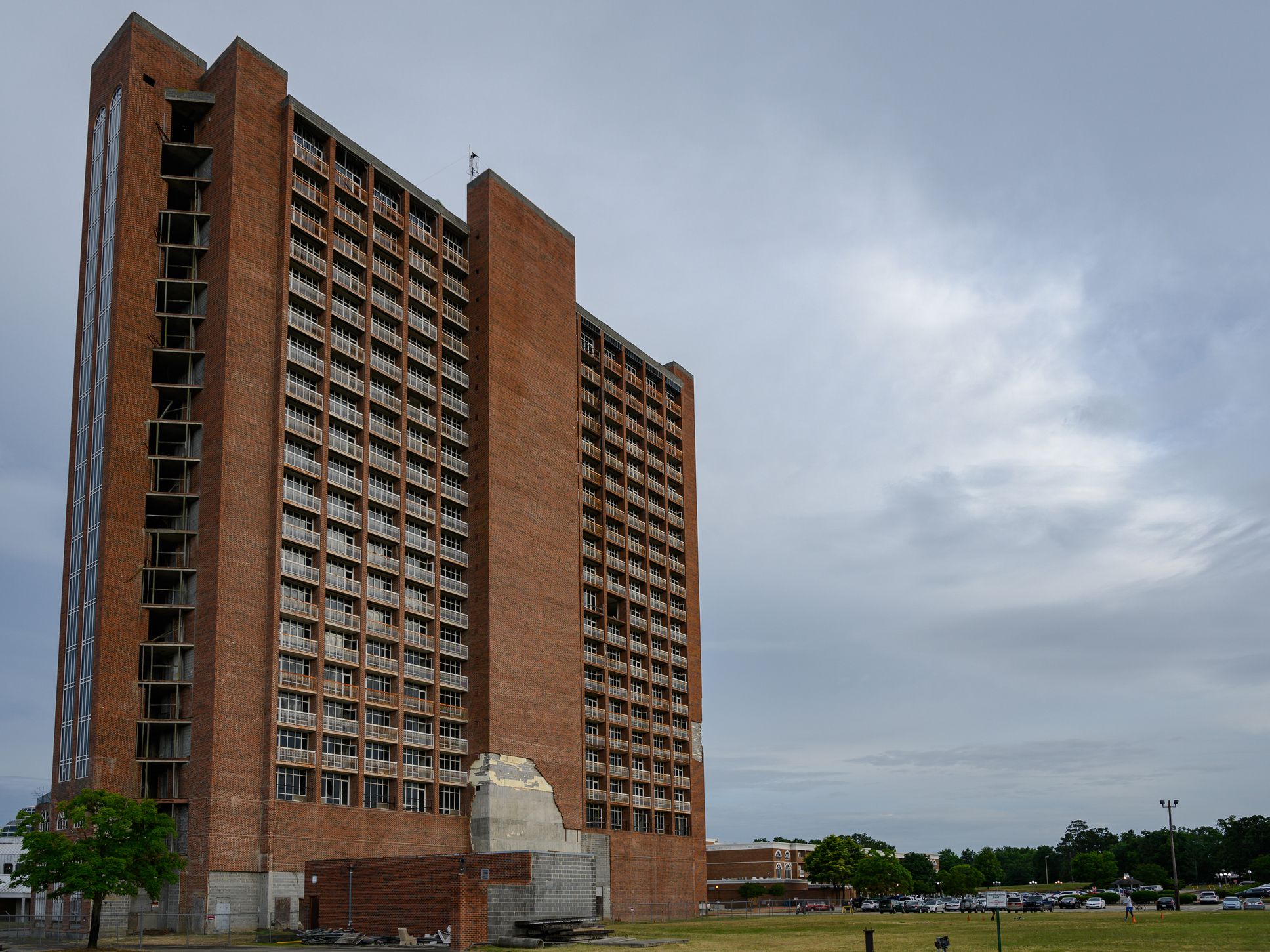
Bad press surrounding a scandal and Hurricane Hugo damage in 1989 forced the sprawling religious-themed water park, theme park, and residential complex to close. It’s now a post-apocalyptic ghost town. Some of the 2,300-acre site has been used for other businesses, but many of the park’s original buildings remain, and this year, a group called MorningStar Ministries revealed plans for a residential community in the former PTL tower.
Spreepark, Germany: Before
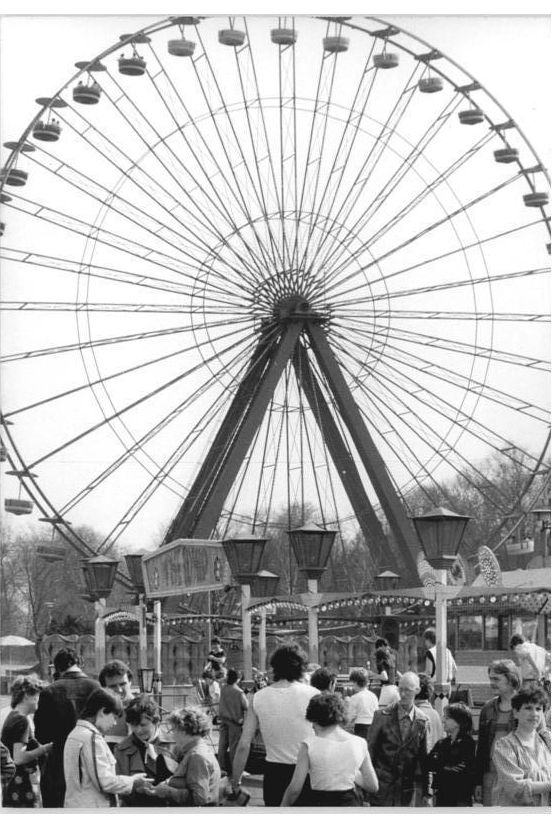
Created by East Germany’s Communist government in 1969, Spreepark (then Kulturpark Plänterwald) thrived as an amusement park just outside Berlin. After the fall of the Berlin Wall, it struggled and was eventually taken over in 1991 by Norbert Witte, who tried upgrades including life-size dinosaurs, a water landscape, and an English village.
Spreepark, Germany: After
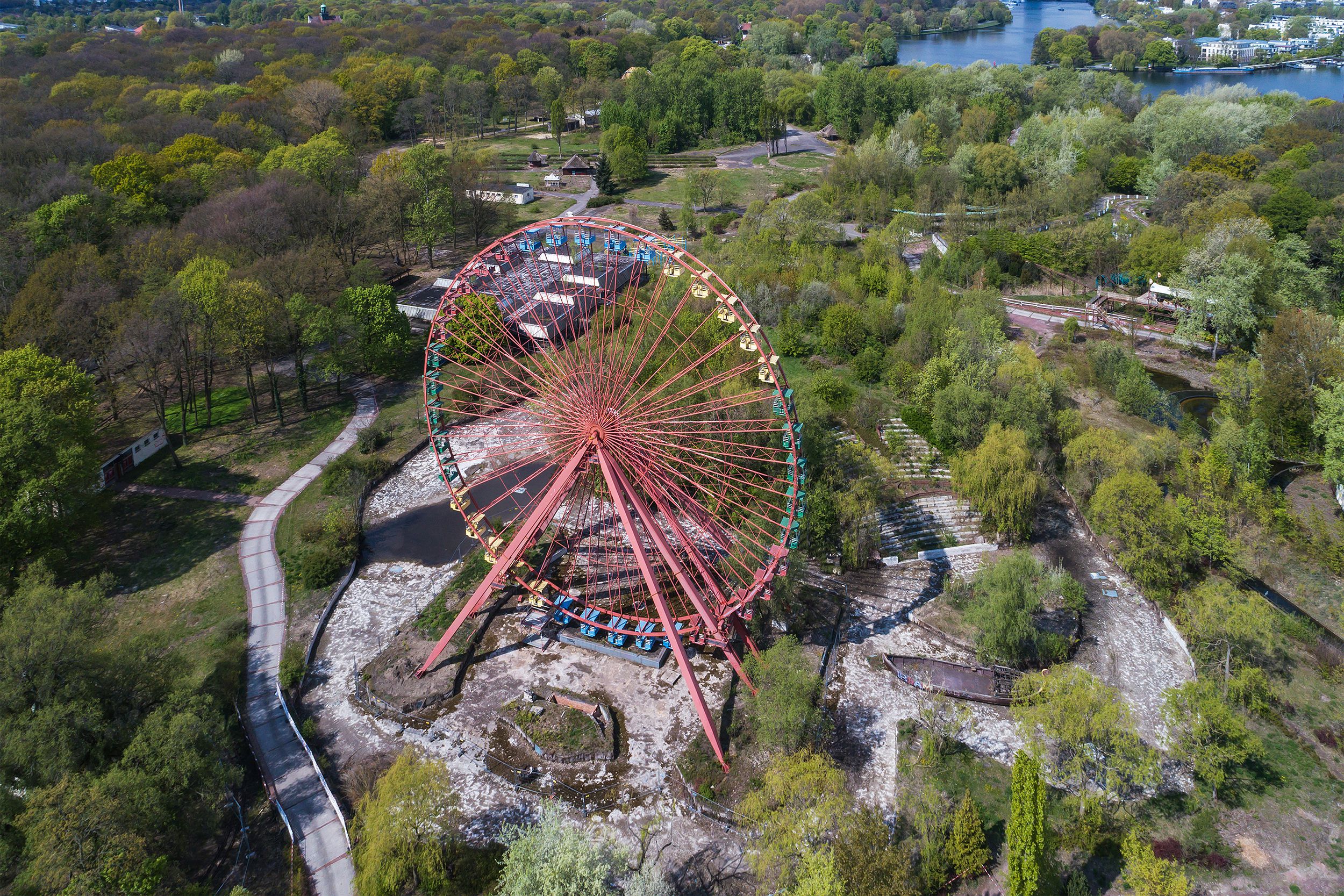
Due to dwindling crowds and Witte’s prosecution for cocaine smuggling from Peru, the park was shut down in 2002. The abandoned amusement park became eerily overgrown, with a rusting, twisted Ferris wheel, decaying roller coaster, and fallen Tyrannosaurus Rex. Last year, however, work began on turning the site into a $53 million cultural center.
Yashima Resort, Japan: Before
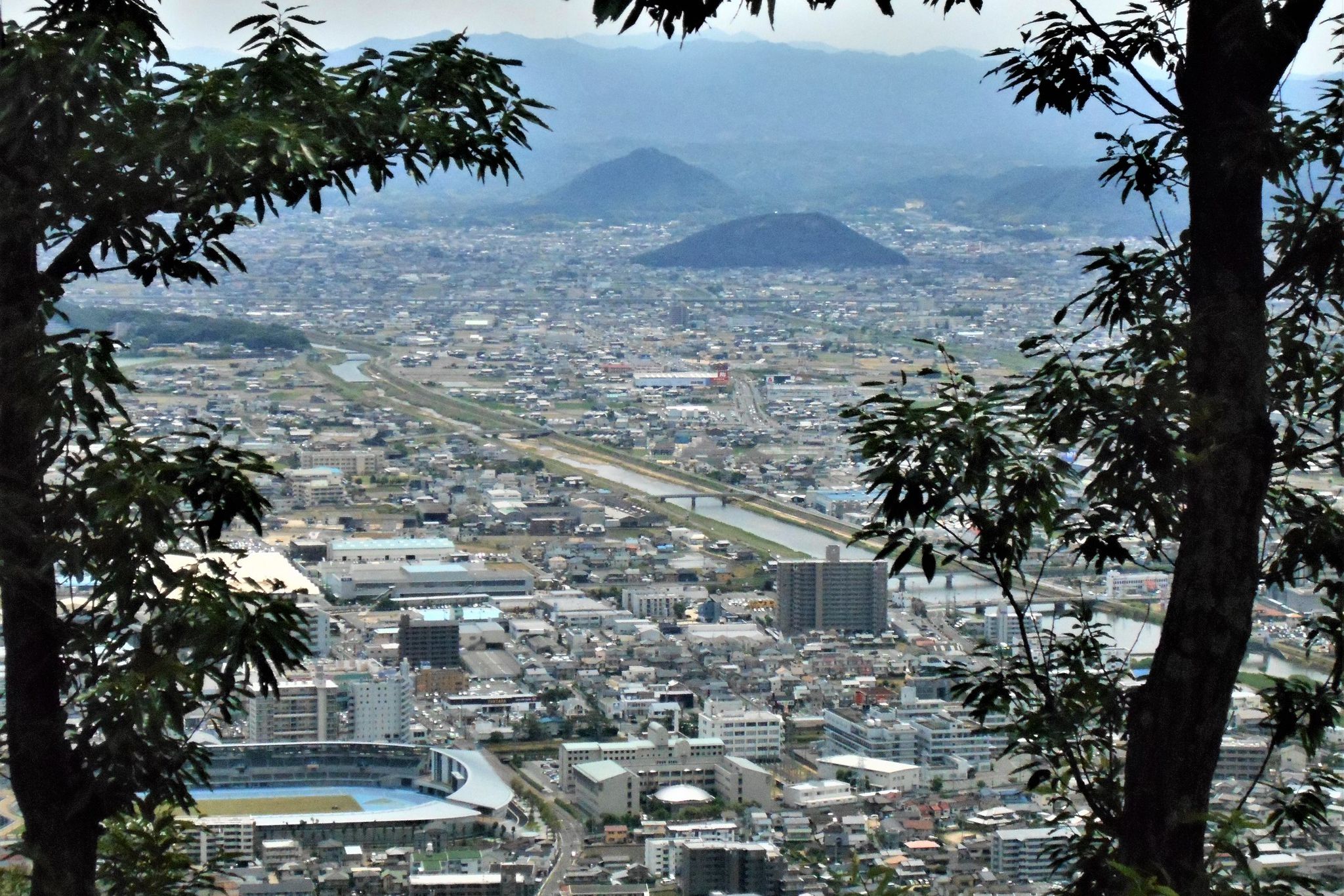
Yashima Resort, Japan: After
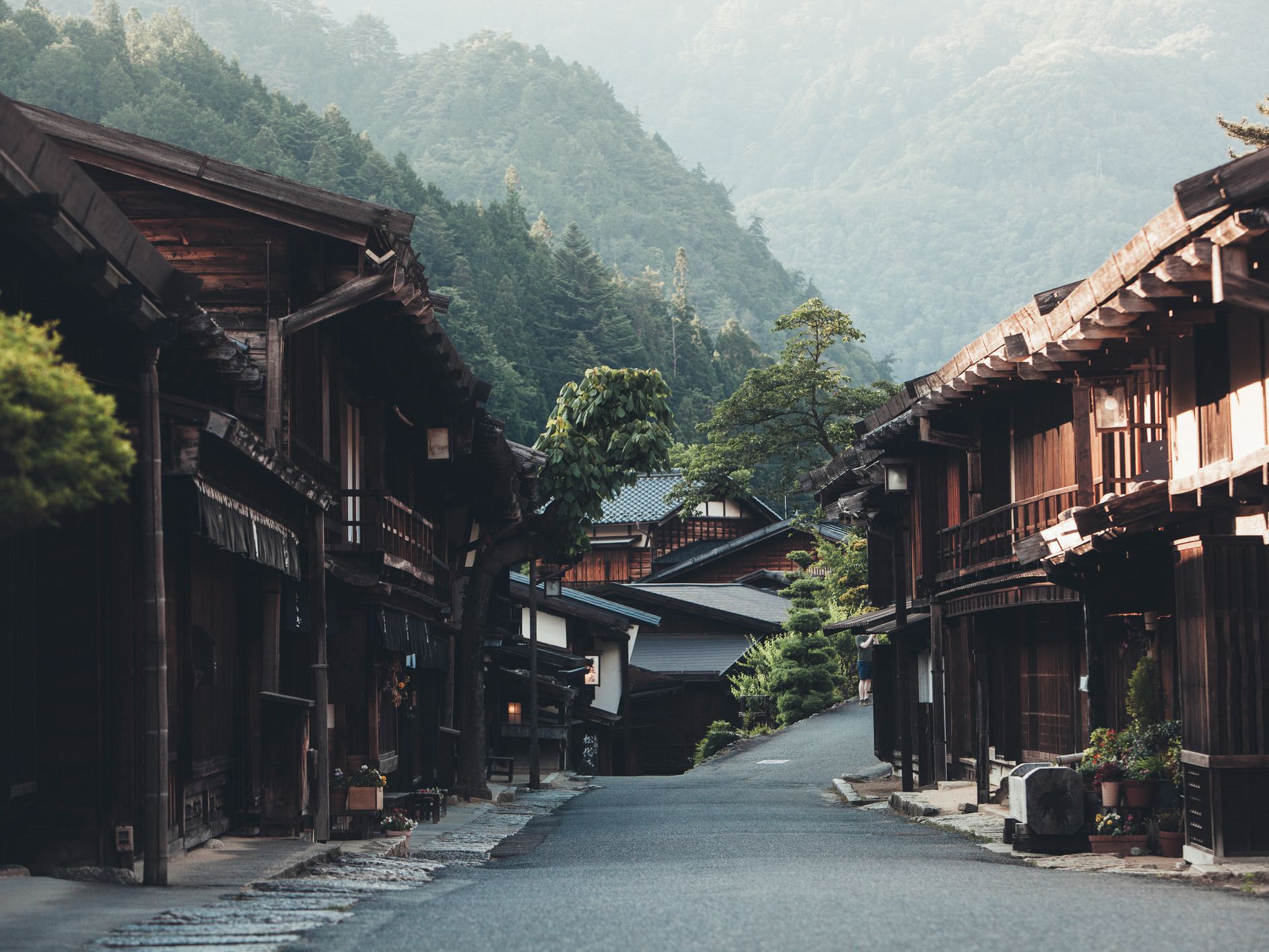
Economic hard times beginning in the early 1990s led to the shutdown of the entire village, leaving behind gift shop collectibles and furniture-filled hotels stuck in time.
Deauville Beach Resort, Miami: Before
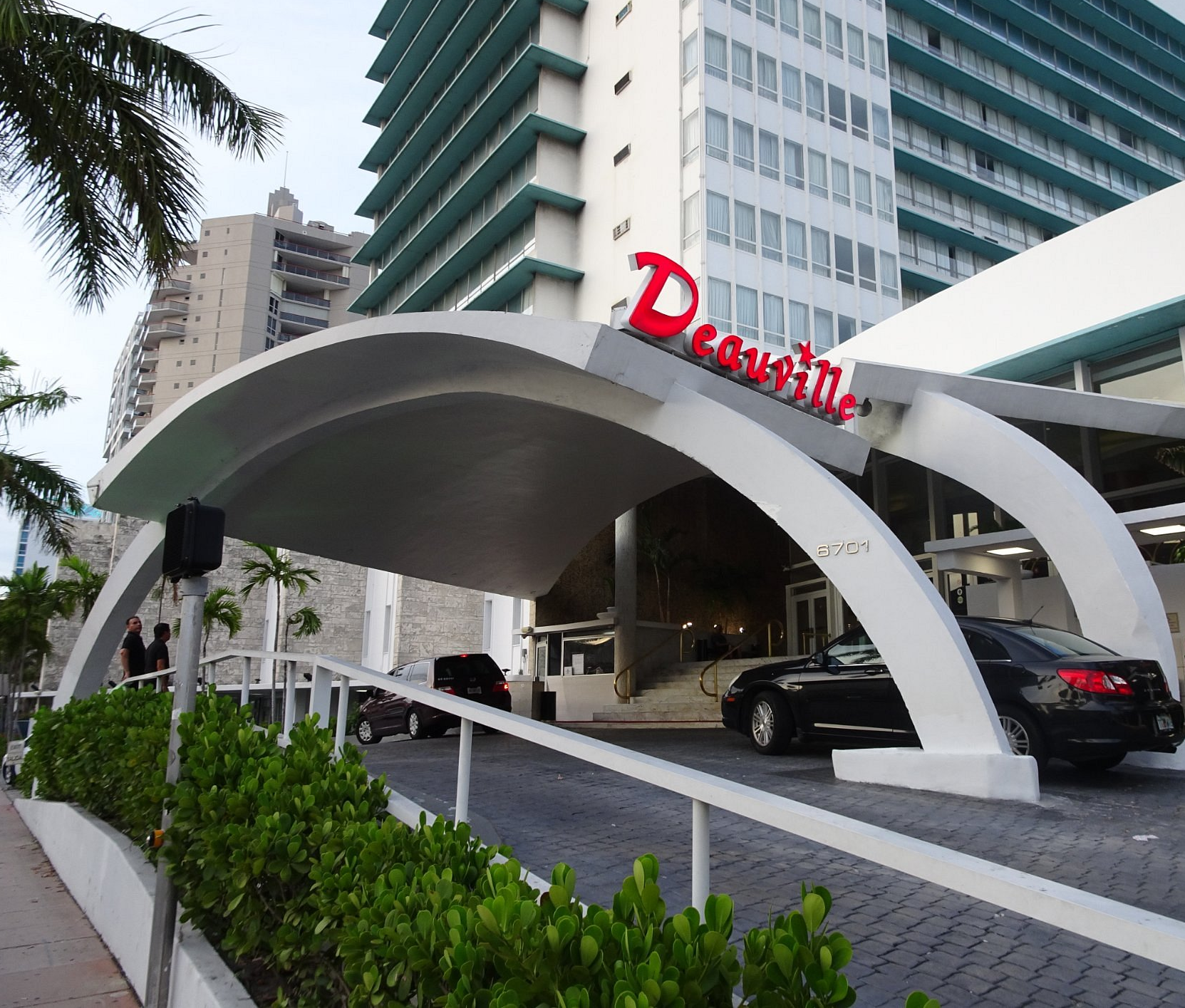
Built in the late ’50s, the Deauville Beach Resort brought needed visitors to Miami’s North Beach, which struggled to attract the tourists who crowd South Beach. It wouldn’t stay in the shadows for long, because in 1964, it played host to a little band you may have heard of — the Beatles — for nine days. One of their iconic appearances on “The Ed Sullivan Show” was broadcast from the hotel’s ballroom. But the Beatles were far from the only famous guests. The Deauville also hosted icons including John F. Kennedy, Frank Sinatra, Bing Crosby, and Judy Garland.
Deauville Beach Resort, Miami: After
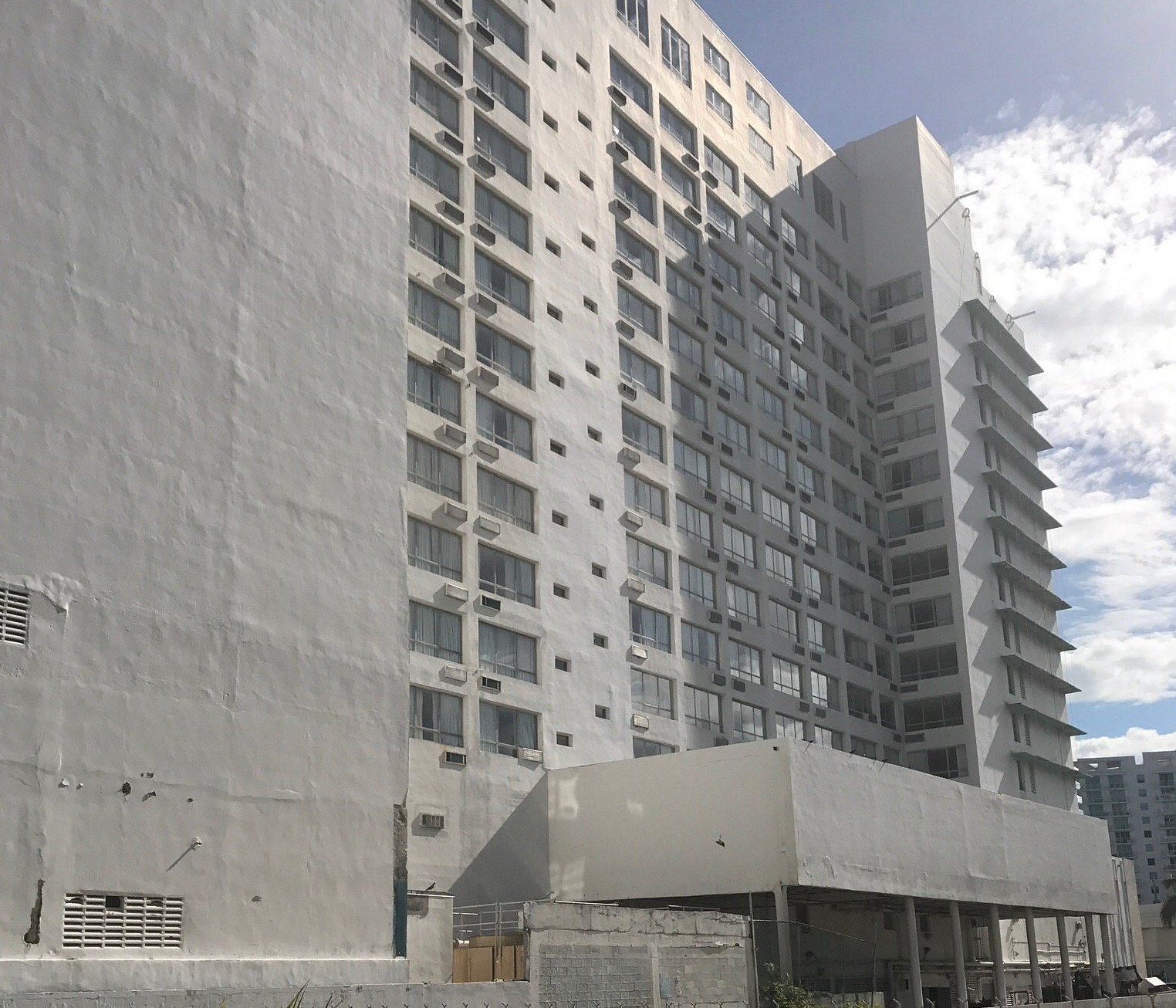
The beginning of the end came in 2017, when an electrical fire broke out at the Deauville. The owners shut the whole place down, and despite city officials’ attempts to force fixes with hefty fines, the hotel remained shuttered, and suffered more damage during Hurricane Irma. In November 2022 Deauville was demolished to make room for a new luxury resort. The area where the resort was stood is not a completely flat parcel of land, but plans are underway to create a near replica of the 1957 Deauville — with the addition of two 40-story condo towers.
Villa Epecuén, Argentina: Before
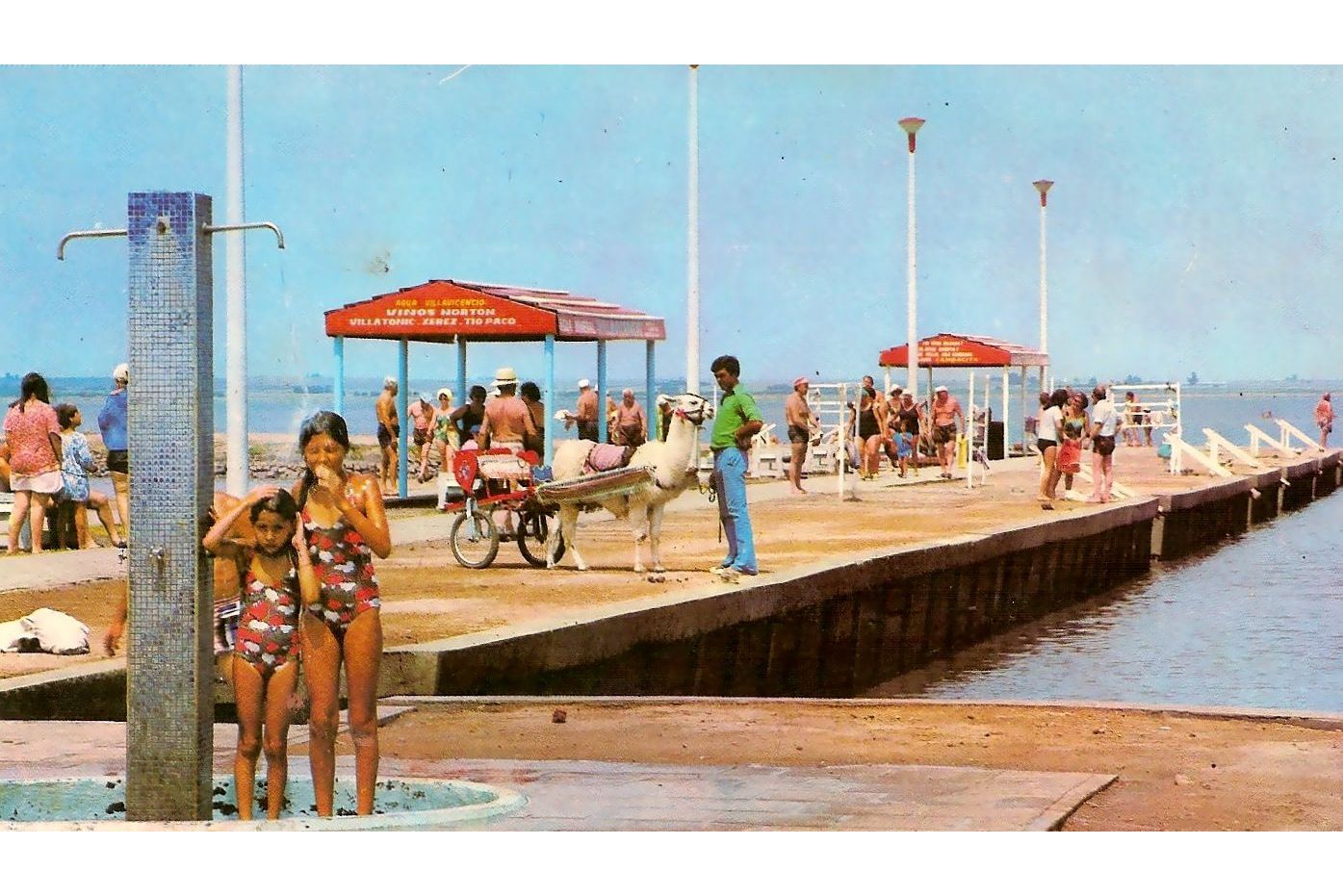
Villa Epecuén, Argentina: After
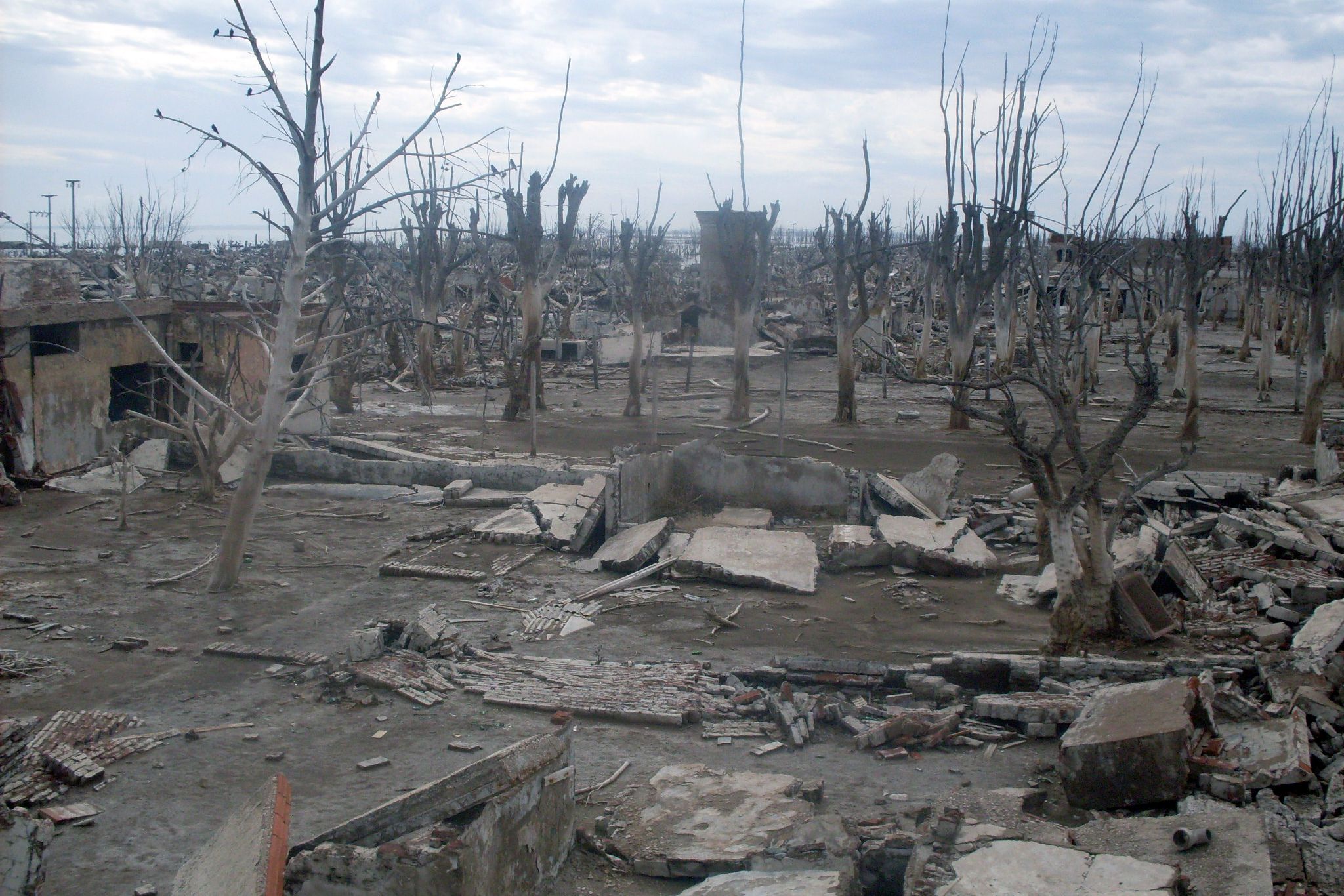
The more than 30 feet of salty floodwater that consumed the town began to recede in 2009, slowly revealing the ruins left behind. People can now see some of the remains that have surfaced over the past decade.
Canfranc Station, Spain: Before
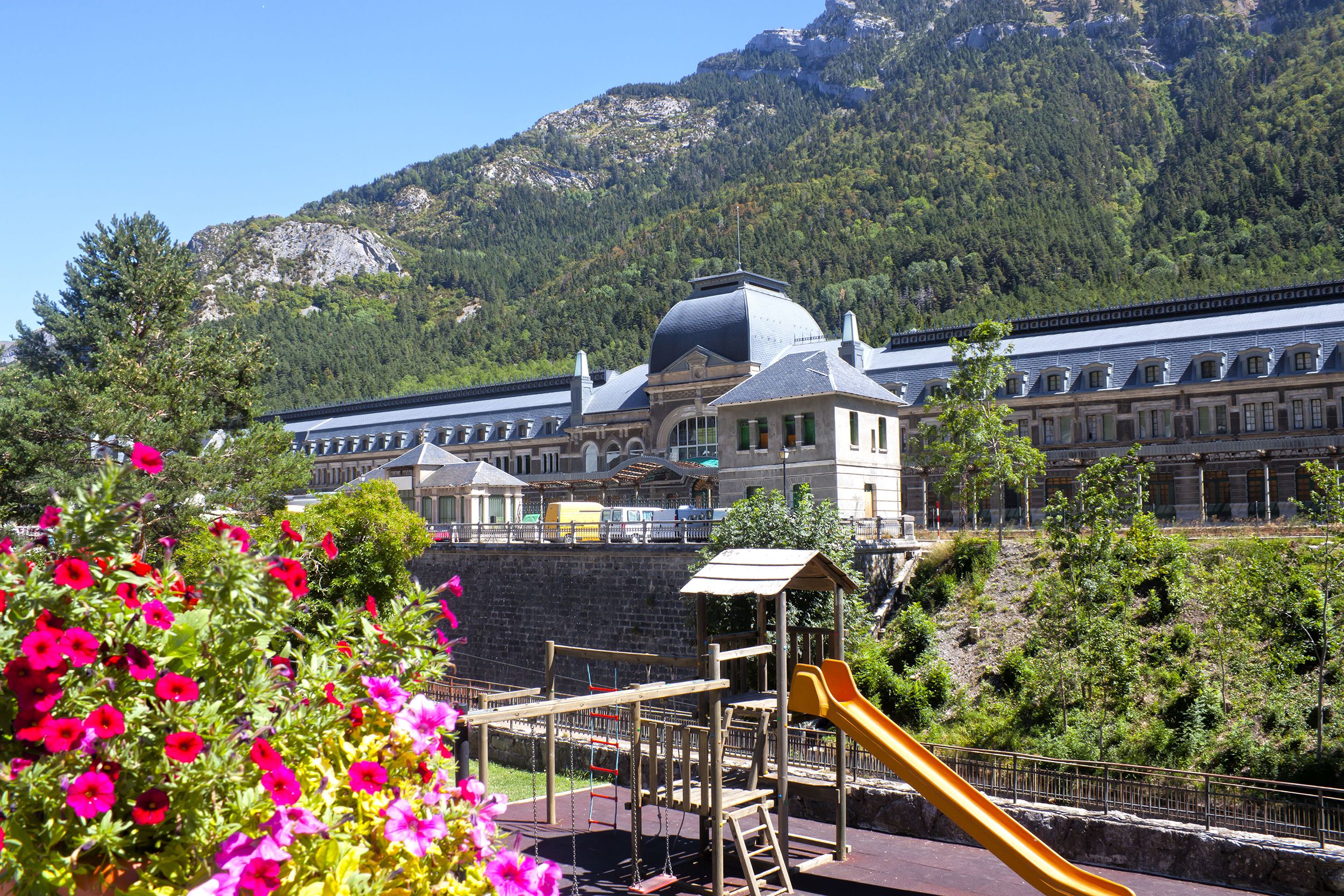
Opened in 1928 in the Pyrenees Mountains, Canfranc Station was once one of Europe’s largest and most opulent rail hubs. Before Nazis took it over during World War II, thousands of Jews — including painters Max Ernst and Marc Chagall — used it to flee by train to Lisbon before heading to the United States.
Canfranc Station, Spain: After
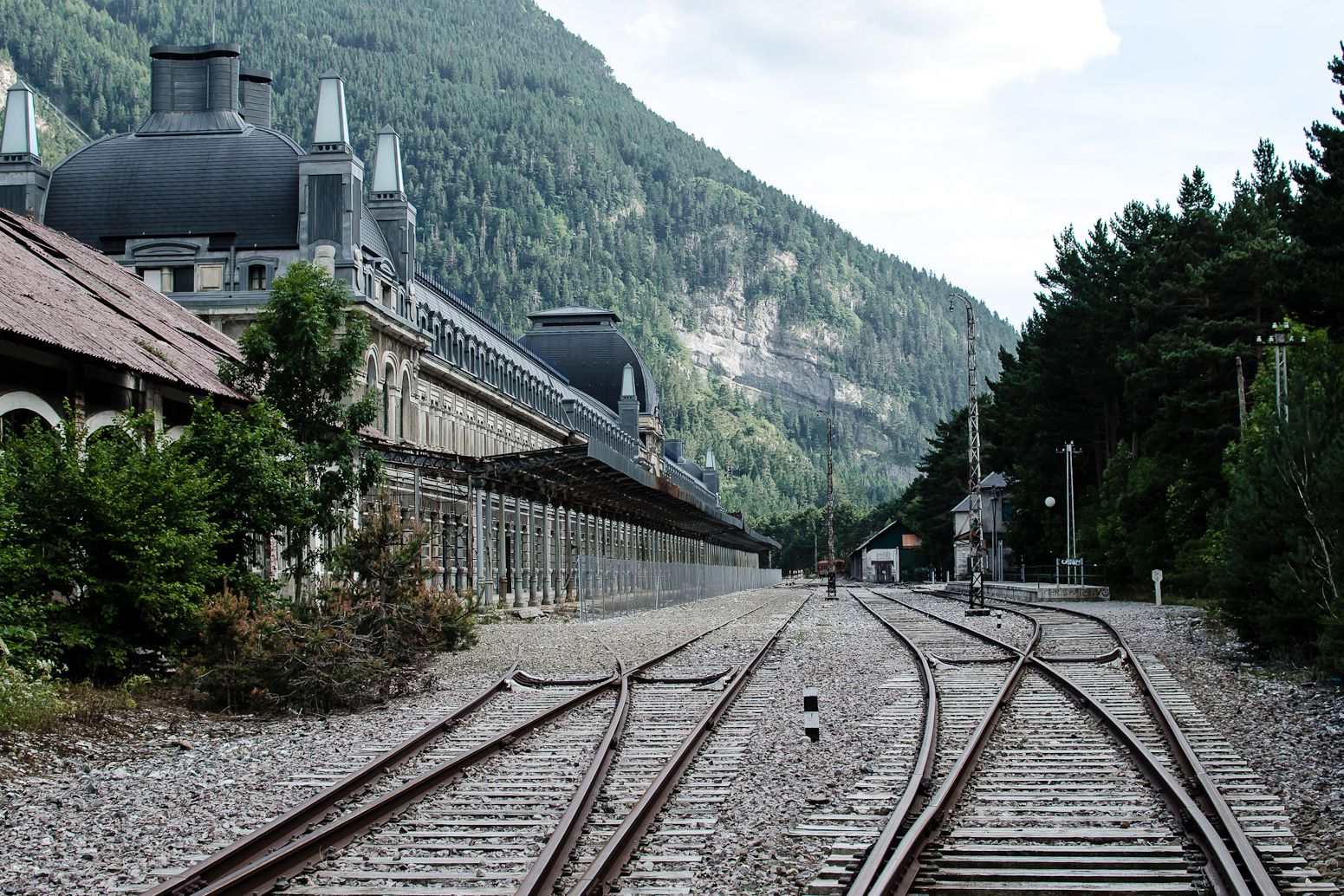
In 1970, a train derailed and demolished the L’Estanguet bridge, which was never rebuilt. Plans are in the works to bring the desolate station back to life as a luxury hotel and railway museum with Spanish and French officials hoping to reignite tourism via a rail route through the Aragon River valley’s scenic landscape. Since the 2010s, the station has been open for twice-daily passenger train runs to and from Zaragoza-Delicias station plus the occasional freight train.
Pripyat, Ukraine: Before
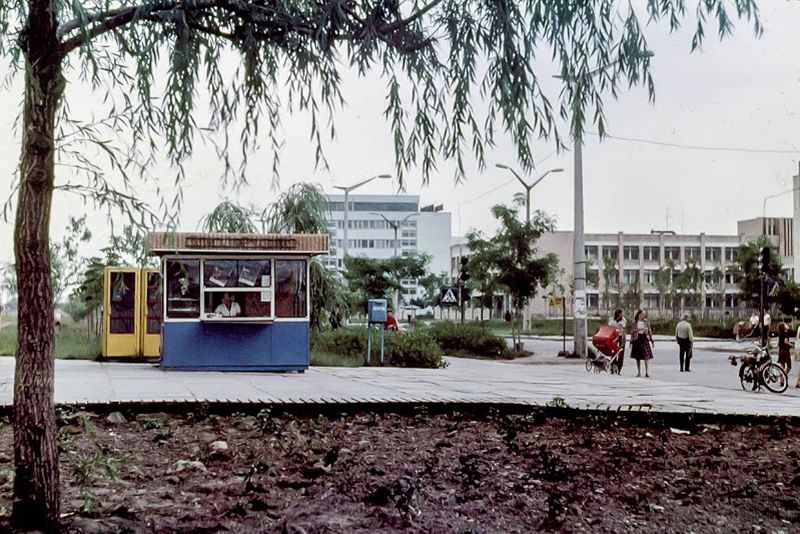
One of the world’s worst nuclear power disasters — with a radioactive release 10 times greater than the nuclear bomb dropped on Hiroshima — forced inhabitants of Pripyat to evacuate their homes April 26, 1986. When the core of reactor No. 4 at the Chernobyl Nuclear Power Plant exploded, an amusement park had been set to open. It opened early, for one day, on April 27, to entertain those preparing to evacuate the northern Ukrainian city.
Pripyat, Ukraine: After

Pripyat is one of the world’s best-known ghost towns. People fled in such haste that the city looks frozen in time — with nature taking over. Although the area remains abandoned, it’s now safe to visit and there are even guided tours. Some of the most haunting images of the city today come from the now-abandoned amusement park: a bumper-car ride still fully intact, and rusted and graffitied roller coasters and carousels.
Varosha, Cyprus: Before
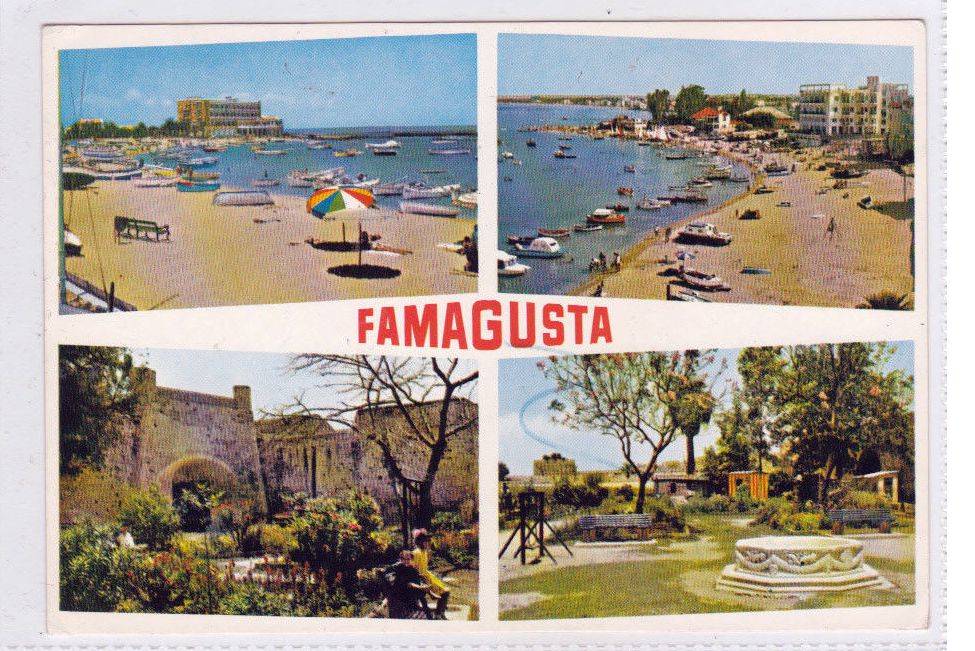
In the 1960s and early 1970s, celebrities such as Elizabeth Taylor, Richard Burton, and Brigitte Bardot frequented the luxurious seaside resorts of this once-popular tourist destination. Varosha was the booming, modern tourist area in the southern quarter of the Cypriot city of Famagusta, drawing the rich and famous to some of the best beaches on the island.
Varosha, Cyprus: After
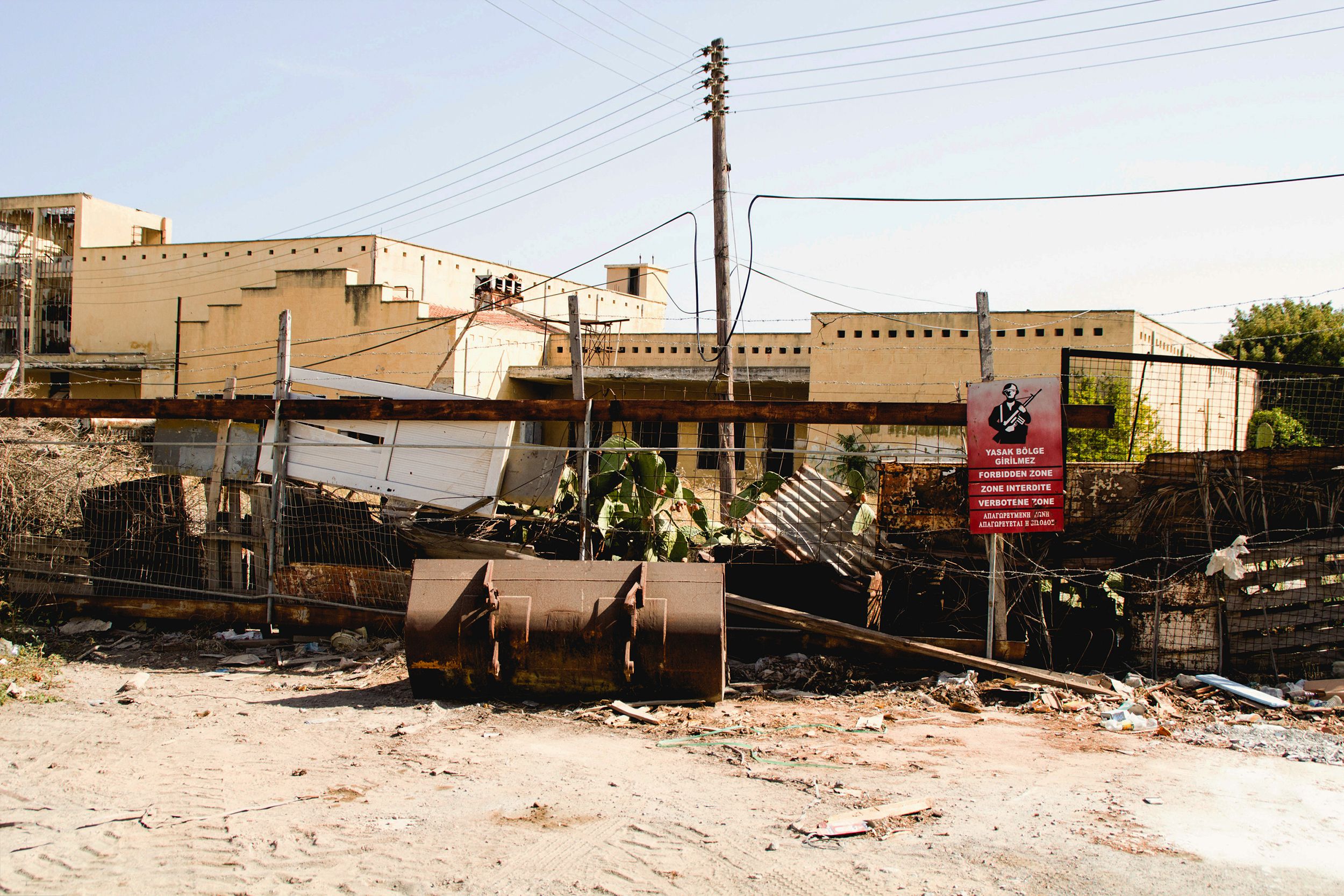
The sudden Turkish invasion of 1974 occupied the resort city, forcing residents and tourists to flee in such a rush that personal effects litter the abandoned streets and buildings, still forbidden to visitors. Plans emerged a few years ago to see the ghost city of the Mediterranean turned into an eco-city as a model for sustainability and peaceful coexistence, and recently there has been talk of reopening the area.
Plymouth, Montserrat: Before
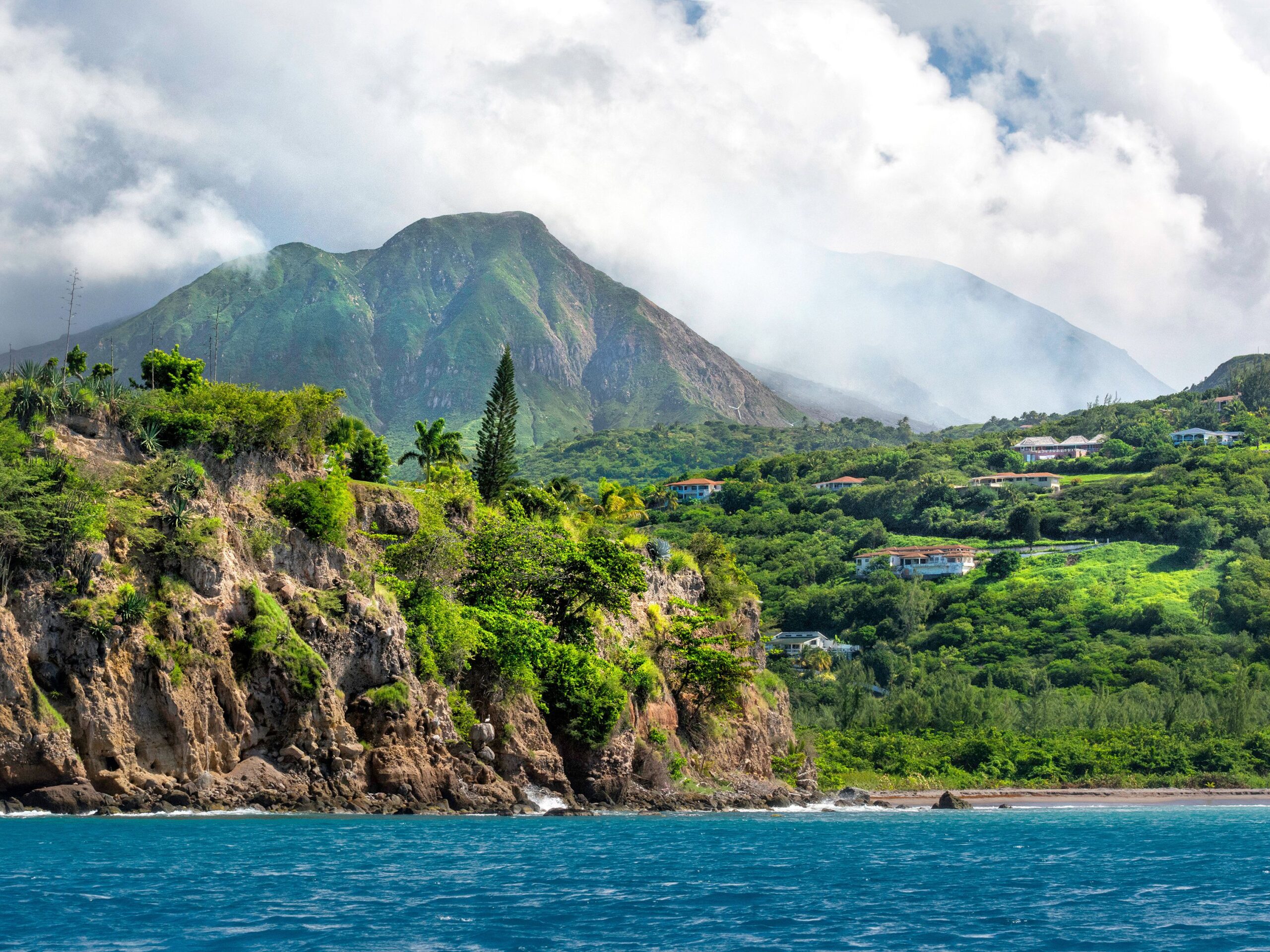
Until 1997, the tiny island of Montserrat — an overseas territory of the U.K. in the Lesser Antilles, West Indies — enjoyed a bit of a tourism boom. The British isle 27 miles southwest of Antigua was where Paul McCartney, Elton John, and Stevie Wonder recorded at Sir George Martin’s Air Studios. It’s also the only country aside from Ireland that celebrates St. Patrick’s Day as a national holiday.
Plymouth, Montserrat: After
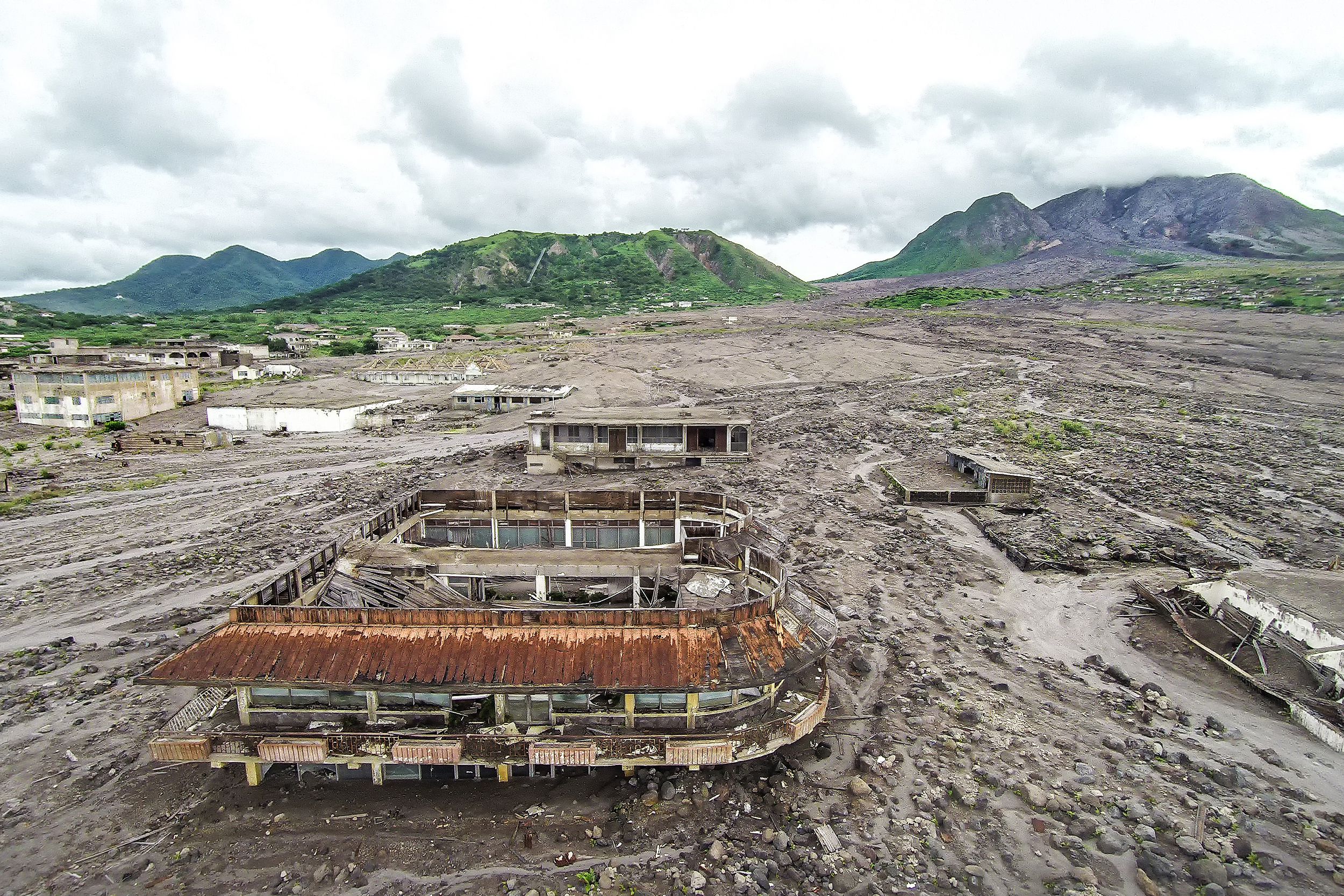
But Plymouth, the island’s once-thriving capital and only port of entry at the time, was leveled by a huge volcanic eruption that destroyed much of the city and its surrounding vegetation. Plymouth — now the Pompeii of the Caribbean — was abandoned permanently in 1997. The Caribbean island is making a comeback, but the volcano remains a wild card and access to the capital is still controlled strictly. The stark, buried city is striking compared with the rest of the lush green island.
Wanli UFO Village, Taiwan: Before
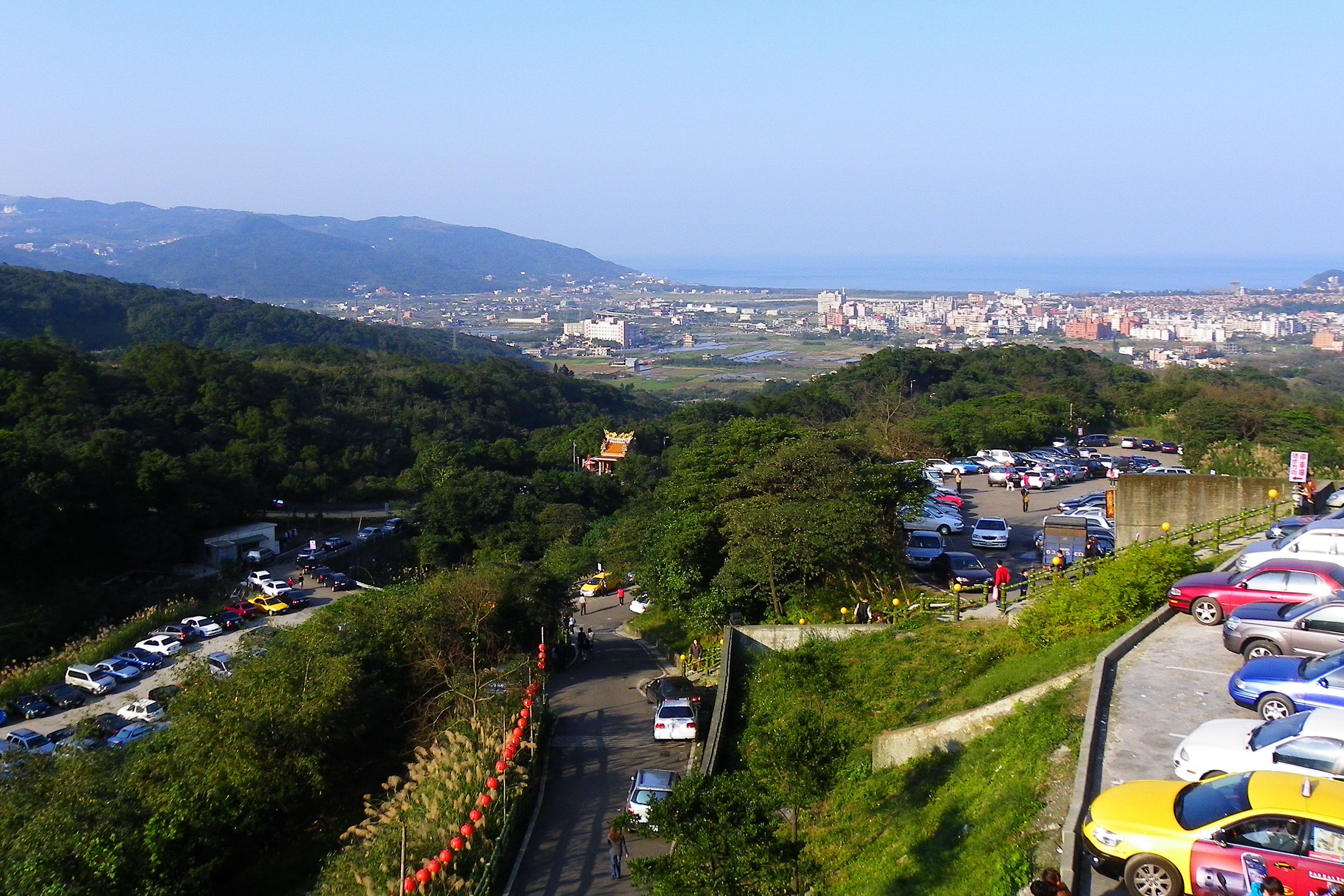
Wanli UFO Village, Taiwan: After
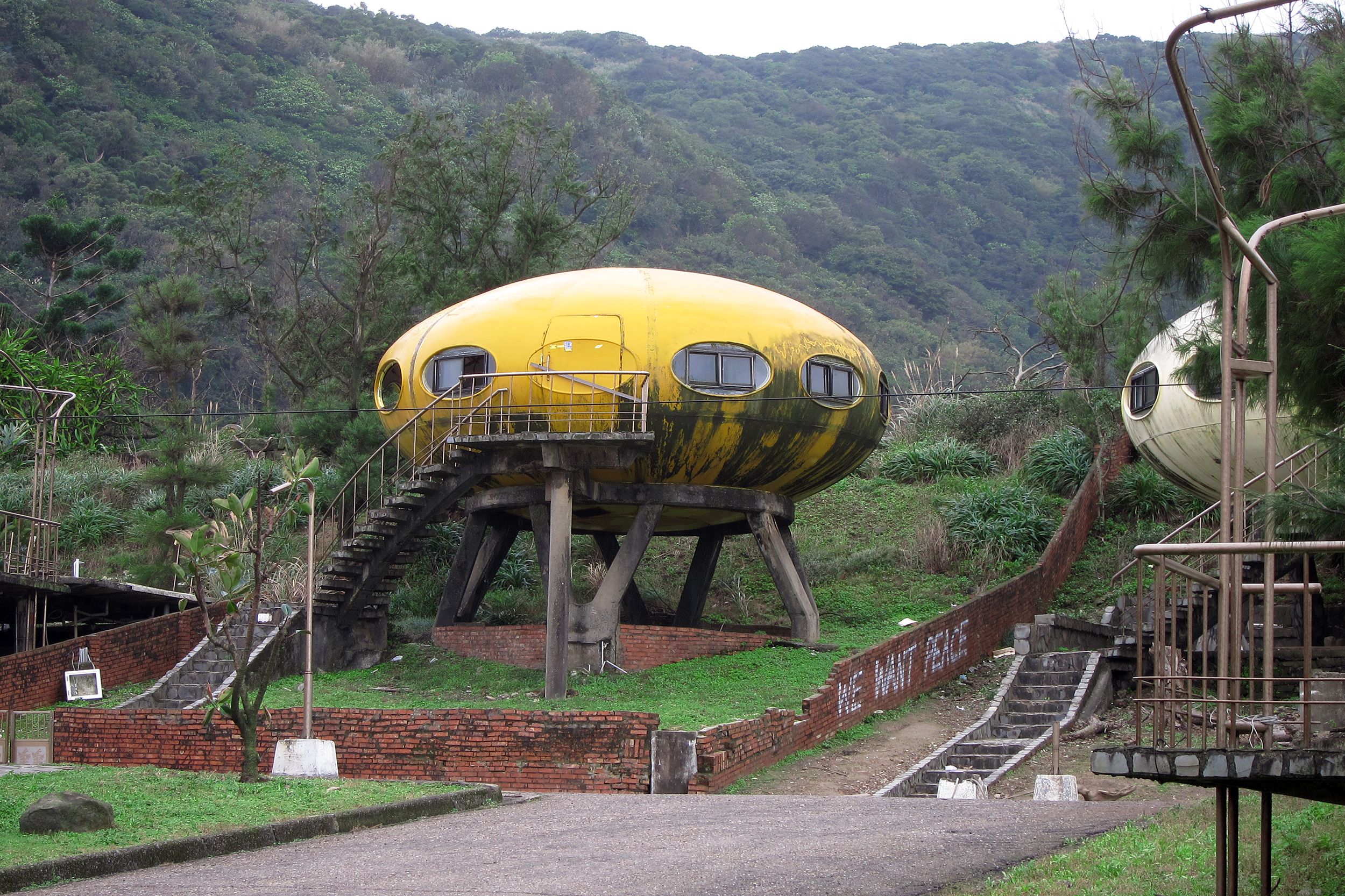
Taiwan’s economy slowed and the tourists that once packed the beach and hotels disappeared. Grand plans for large hotels and hot-spring tourism fell through as investors dropped out, and the area became an unfinished, abandoned ghost town. The future of the retro UFO village is undecided, but tourists and locals prowl for photos in the meantime — and some of the dwellings are said to be inhabited.
